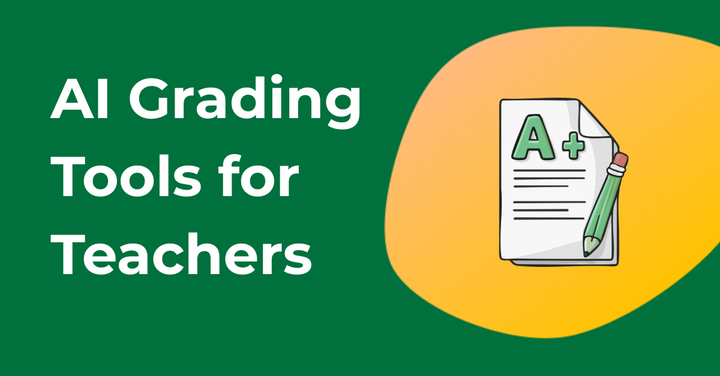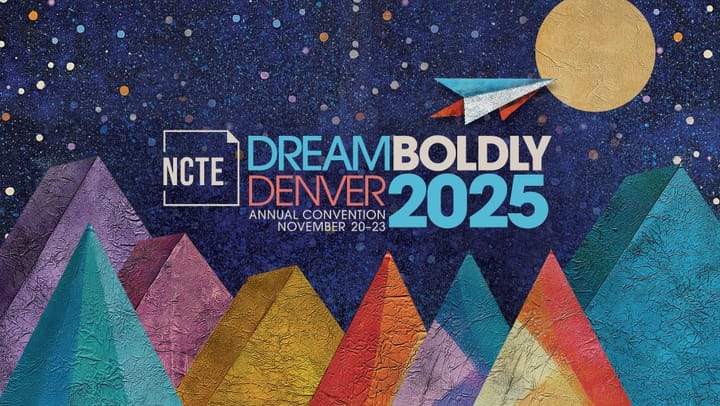Top 12 AI Tools for Teachers and Educators
The best AI tools can improve your students’ learning journeys, and lighten your teaching load – we’ve rounded up the best ones for you to try.

When ChatGPT, DALL·E, and other AI tools first came onto the scene, some schools and universities reacted in the only way they knew how and banned them outright.
At the time, it made sense. No one expected AI to seep into every corner of work and life as fast as it did.
Fast forward a few years, and the attitudes have changed greatly. Many institutions are in the process of drafting policies for the legitimate use of AI tools by both teachers and students.
What's important for you at this stage is choosing the right platforms to officially bring AI into the classroom.
With that in mind, we decided to round up some of the best AI tools for teaching, free or paid, solving a major problem or a minor one, and came up with this list of 12 tools.
If you’re in a hurry, here’s the quick rundown of the 12 top AI tools for teachers before we go into the details.
Best AI Tools For Teachers (Free and Paid)
Although there are many more AI tools for educators, we have listed the 12 best ones based on specific use cases.
1. GPTZero (Best for AI Detection)
GPTZero, at its simplest, scans writing and shows whether AI might have had a hand in the process.
We were the first AI-detection tool to surface when AI-written content took the world by storm after ChatGPT’s boom.
Our tool produces the most accurate detection results with the lowest chance of false positives in the market.
This is one of the reasons why G2 named GPTZero as the #1 Best AI Software Product of 2025.
For detection itself, GPTZero doesn’t use a simple checkmark or “yes/no” flag. The tool shows you the overall percentages of how much text is human and how much is AI. It also uses different shades of colors to signify its confidence in a line being AI-written.
Also, GPTZero has a separate dashboard for teachers where they can upload their assessment criteria, let the AI grade assignments, and leave descriptive feedback for parts needing improvement. Teachers can tweak both the grading and feedback to match their own standards.
GPTZero also has a special Chrome extension for Google Docs, which records editing footage of a document, which teachers can later play to check for signs of unnatural patterns of editing.
- Rating: 4.3 stars (G2), 3.4 stars (Trustpilot)
- Pricing: Free/$8.33/$12.99/$24.99 per month (Pay annually)
2. Curipod (Best for Lesson Building)
Curipod is an academic tool mainly for lesson creation.
Teachers can type in a topic and, within seconds, get a slide deck of 9-12 slides on that topic.
You can ask the tool to load the slides with polls, word clouds, open-ended prompts, drawing activities, and other engaging elements.
The great thing about these AI-generated slides is that you can edit them all you want.
And while it might seem like it, Curipod isn’t solely for teachers. Students also interact with the slides and activities on their devices.
For instance, teachers can set a time limit for activities and control when students can start attempting them. Then, teachers can ask students to vote for the best answers and display the winner on their screens.
To make it more fun, teachers can give students feedback in the style of a historic figure, like Hammurabi.
- Rating: 4.5 stars (G2), 4.7 stars (Capterra)
- Pricing: Free/custom
3. Snorkl (Best for Conceptual Learning)
Snorkl is a platform where teachers issue problems, and students respond using voice and visuals.
For example, teachers can type in a problem, say, “What’s 54 minus 29?”, and invite students to work it out on their screens while explaining their thinking out loud into their mics.
Snorkl watches and listens to everything and pops up with instructions for the current step and feedback on the previous ones.
“Oops, there seems to be a mistake with the subtraction. Check your borrowing on the tens place.”
What sets Snorkl apart among AI tools for teachers is its focus on conceptual learning.
Since students have to explain as they go, shortcuts through Google or ChatGPT aren’t possible.
No student can directly write 54-29=25. Instead, they need to show that they actually understand the process.
- Rating: NA
- Pricing: Free/custom
4. NotebookLM (Best for Interactive Research)
Let’s say you’re looking for a specific piece of information for your lesson planning that is buried somewhere in a folder full of resources (Google Docs, PDFs, some websites, etc).
Instead of digging through everything yourself, you can turn to NotebookLM for help.
NotebookLM by Google lets you upload all your sources, and the platform will generate everything from Depth-of-Knowledge questions and study guides to FAQs and timelines, based solely on your sources.
Besides text, NotebookLM can create audio summaries in the form of simulated podcasts with two AI “co-hosts” chatting through your material in a surprisingly natural tone.
If you want to try it yourself, listen to the podcast titled "Shakespeare's Tragedies” in this “William Shakespeare: The Complete Plays” notebook, one of the featured notebooks on the platform.
As of September 2025, you can even make video summaries with visuals to drop into your lessons.
Since the free version lets you make 100 notebooks with 50 sources each, NotebookLM is easily one of the best free AI tools for education.
- Rating: 4.7 (Google Play), 4.8 (Apple App Store)
- Pricing: Free/custom
5. Gradescope (Best for Assignment Grading)
For teachers who grade piles of papers at home every evening, Gradescope can lighten the load by grading them with AI.
Its main marketing feature is that it groups together similar answers from students so the teacher can grade them all in one go, instead of grading one student’s submission at a time.
It’s important to note that Gradescope doesn’t only handle basic primary-grade assignments. It can grade complex and high-difficulty assignments just as well, such as coding, maths, chemistry, physics, biology, engineering, and economics problems.
While the tool accepts scanned handwritten uploads, it works best when students’ papers follow a fixed template, for example, a PDF you’ve laid out before the quiz, so the platform can align student responses to that master layout.
In addition, you can create rubrics (list or grid view) and share them across multiple courses.
A thing that traditional grading mostly skips is providing feedback after grading so students get to know where they need to improve.
Gradescope also has a solution for that. After grading students, it offers statistics based on patterns it found.
For instance, teachers can see:
- Which questions tripped up students the most
- Which rubric items were used most or least
- Time-stamped grading activity logs
- Tag-based analysis to track concept mastery
With a strong backing of Turnitin, Gradescope is worth considering.
- Rating: NA
- Pricing: contact Gradescope
6. Suno (Best for Engagement through Music)
Nothing sticks in our heads better than music. This is especially true for children, as music training can help improve their attention and working memory.
What this tells us is that if we want students to memorize a boring science or math concept, turning it into a catchy tune can be a great way.
Suno is the tool that lets you do that simply with prompts and a few clicks.
You can type, "a cheerful pop song about photosynthesis," or go custom mode, drop in your own lyrics, and pick a style, rap, country, blues, you name it.
Hit create, and a minute or two later, you’ll get two music tracks complete with vocals and background, ready to download as audio or video files.
Listen to this song “Heroes of the Classroom” which a user created using Suno.
Suno is simply one of the most unique AI tools for the classroom and truly one of a kind.
- Rating: 4.8 (Google Play), 4.9 (Apple App Store)
- Pricing: Free/$8/$24
7. Wayground (Best for Gamified Formative Assessment & Practice)
Wayground, which was formerly Quizizz, started as a simple quiz maker, not much different from the other quiz builders you might know.
Recently, though, it rebranded into something closer to a full teaching assistant.
You can now put together lessons, passages, flashcards, and interactive videos while mixing in images, audio, and video clips when you want.
There’s also the library with a massive pool of resources created by teachers for teachers.
You can adjust the reading level, language, and tone of the material you generate using Wayground to make it feel lighter or more challenging.
In addition, a teacher can assign the same quiz to the whole class but adjust settings for individual students, like extra time, fewer answer choices, and text read aloud, so every student feels included.
- Rating: 4.7 (Google Play), 4.8 (Apple App Store), 4.9 (G2)
- Pricing: Custom
8. Khanmigo (Best Free AI Tool for Teachers)
Khanmigo is built by Khan Academy (which needs no introduction) as both a teacher’s assistant and a student tutor.
On the teacher’s dashboard, you’ll see ten core activities, ranging from lesson hooks and rubric creation to summarizing student chat histories.
You can also brush up on content you haven’t taught in a while using the “refresh my knowledge” feature.
Where teachers may notice the most impact is in planning. The system can generate a full lesson plan with objectives, essential questions, assessments, extension activities, and more.
Khanmigo is free for teachers depending on their region.
- Rating: NA
- Pricing: Free for teachers (region availability matters)
9. Class Companion (Best for Automated Feedback on Short-Answer Writing)
Class Companion addresses the challenge of providing students with feedback while the work is still fresh in their minds.
It uses AI, specifically GPT-4 to act as a first-line responder for student writing (short-answer and essay questions).
Teachers can upload or pick content, say, a short story, a reading passage, or their own prompt, and then create questions and a rubric.
When students submit their answers, Class Companion instantly grades them and provides feedback.
In case teachers disagree with any AI feedback or scoring, they can always override it with a personalized version of their own.
In addition, the platform can also offer suggestions and motivating messages via its tutor module called Ditto.
Just like Gradescope, Class Companion also generates insights based on the patterns it detected in the submissions like:
- Which concepts most students struggled with
- How many revisits they needed
- Types of errors repeating often
But Class Companion goes one step ahead of Gradescope by offering accommodation features such as translations (of questions), text-to-speech inputs and outputs, reading level assistance and more, for students of all abilities.
- Rating: NA
- Pricing: Free for teachers/custom rates for schools & districts
10. AutoDraw (Best for Quick Visuals)
The need for visuals in a classroom never really goes away. Google’s Autodraw solves this problem for teachers and students and is one of those AI tools for teaching that fixes a small but everyday problem.
The tool itself is simple. You open it in your browser and start doodling a shape, and as your pen stumbles across the canvas, AutoDraw’s AI tries to guess what you meant.
Suggestions line up across the top, and when you pick one, it replaces your doodle.
The tool also lets you adjust colors, add text, drop in shapes, and then download the whole thing as a PNG file.
- Rating: 4.3 (Product Hunt)
- Pricing: Free
11. Eduaide.AI (Best for Generating First Drafts of Teaching Materials)
Teachers often find themselves buried under the administrative weight of their job. They have emails to write, lesson materials to prepare, accommodations to track, and what not.
While these tasks are essential, they drain a great amount of energy that teachers need in the classroom.
Eduaide.AI solves this very problem. It is one of many AI tools for teaching, but with a broader range of tasks (100+) it can perform for teachers.
For example, when a math unit feels stale, Eduaide’s Instructional Strategy Generator can suggest something like a jigsaw activity or a role-playing task you hadn’t considered.
That was just one example of an Eduaide’s Generator mini-tool, there are many others. And aside from Generators, it has a bunch of mini-tools under the Organizers and Games category as well.
- Rating: NA
- Pricing: Free/$5.99/custom
12. Fetchy (Best for Quick and Simple Teaching Tasks)
Fetchy is a virtual assistant for teachers made by an educator and product designer sibling duo.
The tool is simple and much like ChatGPT, but with the ability to generate content with smaller prompts. At least, that’s how the developers distinguish it from ChatGPT.
You can prompt Fetchy to do over 50 tasks that a teacher’s role involves. For instance, if you’re facing a tricky situation with a student, their parents, or a coworker, Fetchy’s “Get Advice” tool can offer help with recommendations.
Or you can use its “Generate a list” tool to generate a list of age-appropriate dystopian novels for your students, for example.
That said, the tools are all text based and you’ll feel the output to be much similar to ChatGPT’s output. So, Fetchy is, in a way, just a wrapper for ChatGPT or some other major AI chatbot.
Teachers should rely on Fetchy mostly to get a push. It’s not designed to help with complex tasks.
- Rating: NA
- Pricing: 7-day free trial/$10 per month afterwards
What to Look for in AI Tools for Teaching?
When you’re looking for top AI tools for teachers, look for things that we looked for while making this list:
- The best AI tools for teachers should actually lighten a teacher’s workload, not add more steps.
- A good tool should adapt to different learning levels and even provide feedback that feels directed at an individual student.
- Many AI apps for school now double as plagiarism checkers and AI detectors. If you’re going for an AI-detector, make sure it has this combo.
- The top AI tools for teachers don’t demand a steep learning curve or make you abandon your existing system. They plug into major education platforms.
- There’s also file format friendliness, as students can hand in work as Word docs, PDFs, and Google Docs.
Good Teaching Deserves Good AI Tools
The AI tools you just explored take repetitive tasks off your plate so you have more energy to pour into the parts of teaching that matter the most.
Of course, no roundup of AI tools for teachers feels complete without a strong AI detector in the mix, such as GPTZero.
It was the first serious player after the AI boom, and it’s still leading with the highest accuracy and lowest chance of false positives.
If you want to try GPTZero, try it for free here.


